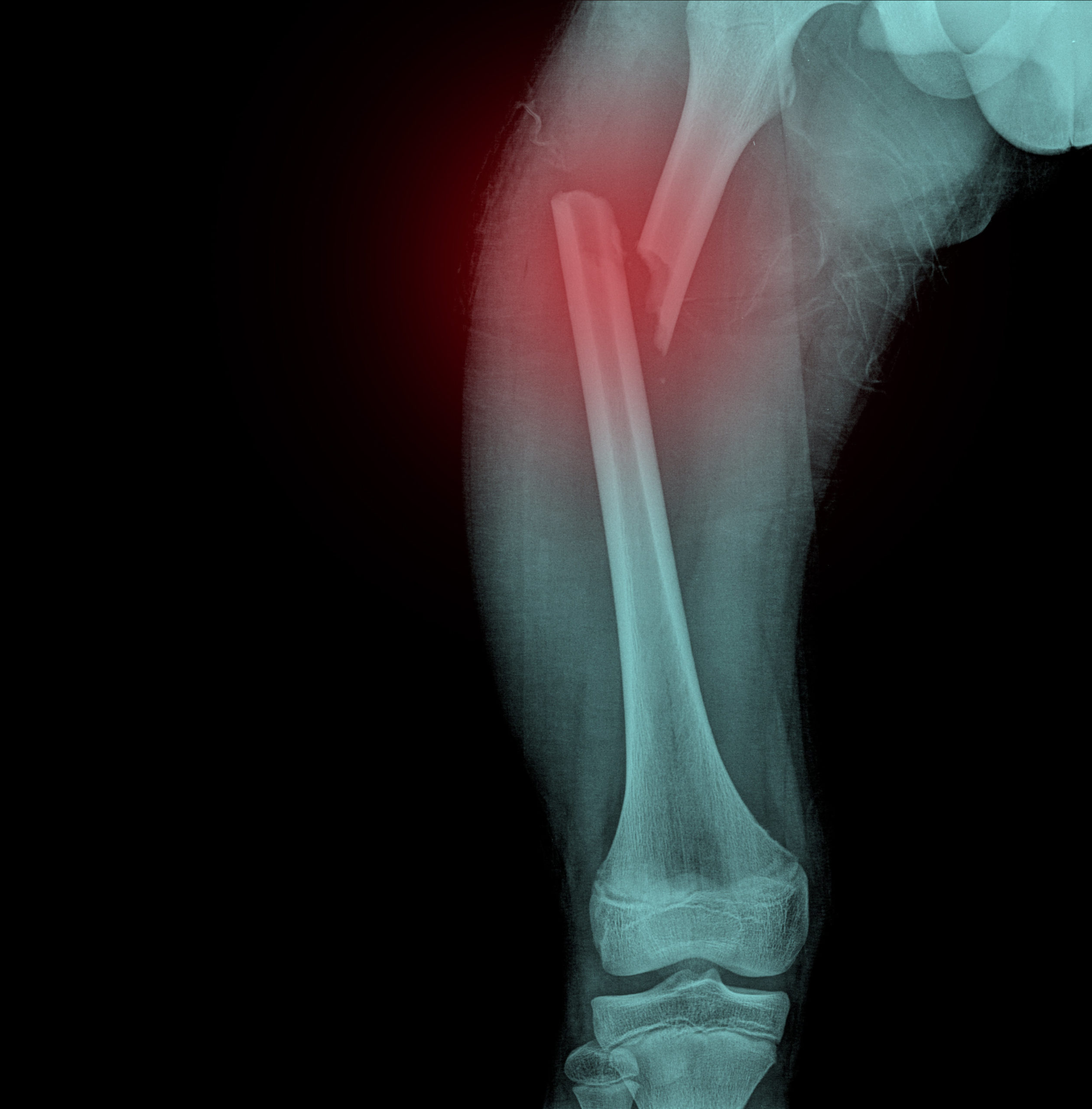After surgical fixation of a femur fracture, then the real work begins!
Fracture to the femur is associated with loss of muscle mass in the thigh coupled with alteration in the walking style.
In this article, we will point out the most important exercises to focus on during your physical therapy routine following surgery using an intramedullary rod.
The following are the movement most affected following fixation of thigh bone fractures with nintramedullary nails and cumulatively can prevent a return to pre-injury functional status.
- Hip abduction weakness
- Knee extension weakness
- Front knee pain
- Disturbances of gait
Weight bearing.
Walking after surgery not only prevents the risk of blood clot from laying in bed for prolonged periods of time, but it also stimulates bone healing. Research has shown that individuals who bear weight earlier heal faster and also have a shorter hospital stay.
It is advised to use walking aids during this process for that extra needed support
For most mid-shaft fractures (fractures in the middle of the long-bone), it’s possible to immediately start off with full weight-bearing right after the surgery.
General body conditioning exercises
These exercises are essential for the better functioning of the cardiovascular system which is the system in charge of blood flow around the body.
- Biking
Do this on a stationary bicycle. it improves blood flow to the lower extremities which is essential to the healing of tissues.
- Walking
Walking is preferably done on a treadmill because you get to support yourself on the arms of the hand grips.
- Swimming
Swimming is a safe exercise that works on the whole body without putting strain on the joints.
Range of motion exercises
For hip joint
- Abduction exercises
This is one of the movements most compromised following a femur fracture. This could be due to injury of the abductor muscles during either the accident or during the surgery.
How to;
While lying on a yoga mat or on a bed with both legs straight, slightly lift the operated leg off the ground and move it outwards (away from yourself) and then back in. Repeat 10 of these doing 3 sets.
For the first few sessions, do these with assistance till you can competently do them by yourself.
- Flexion exercises
While lying on a mat, facing up, start with both legs straight, then slowly bend your knee joint till the back of the knee and back of the leg are touching then straighten it. Do 10 repetitions with 3 sets.
This may feel quite tight in the start but it eases with time. It may be hard to bend your own knee at the start so it’s ok to ask for assistance from a family member.
P;s; don’t force it and stop soon as it starts to feel painful.
- Internal rotation and external rotation
Do this standing upright. Start by having both feet facing forward. While leaning against a wall or holding onto a rail, turn your foot inward and outward. Do 10 repetitions in either direction doing 3 sets.
Look straight ahead to prevent rotation of your upper body.
For knee joint
- Flexion and extension exercises
Sit on a chair or a bed. Start with the leg in extension, then gently lower it off the bed while supporting the back of the knee. A family member or a physiotherapist can support the limb for you.
Start by bending the knee to about 30 degrees and increasing depending on the pain tolerance level.
This may be more painful if you had the surgery by retrograde approach(internal link) meaning the nail was introduced through the knee than the antegrade approach where a nail is introduced through the upper part near the hip.
- Quadriceps closed chain exercises
With the leg extended, have your foot pressed onto a surface like a wall and then contract your quadriceps muscles.
How to;
Hold and release. Hold for 5 seconds and then release for 3 seconds. Do 10 repetitions of holding and releasing. repeat this over 10 times a day.
For ankle and foot joints
Ankle joint;
While sitting on a chair or a mat, face your foot up and down, inwards and downwards. Repeat this 10 times for 3 sets. Then Move your ankle in circles
Foot movement;
With the leg straight out, do toe curls, curling your toes downwards, and then fan them out.
Strengthening exercises.
These typically begin about 6weeks following the surgery though it varies from person to person.
Most of the time, one exercise, will work on most of the exercises in the lower limb
- Mini squats
Support yourself by gripping a rail or the back of a chair and slightly bend your knees which will ultimately also bend your hip. Keep your back straight. Hold for 2 seconds and then get back up. Do 10 repetitions of these.
- Sitting heel raises
While sitting on a chair, raise your heels off the ground and feel your calf muscles contract. Repeat 20 of these and do 3 sets.
- Standing heel raises
While supporting yourself on a rail or the back of a chair, raise the heels of both feet, hold for 2 seconds then lower them. Repeat this 10 times.
Coordination and proprioception exercises.
Coordination and proprioception exercises need to start during the gait training exercises. They are crucial since coordination and proprioception are quickly impaired from prolonged immobilization.
- Single leg raising exercises and standing with eyes closed exercises
In the start, do these while supporting yourself on a rail or a wall as it’s easy to fall.
In conclusion, because femur fractures can be associated with muscle weakness and atrophy, these exercises will improve your range of motion, strengthen your leg muscles and improve coordination.
In conclusion, it is important to do certain physical exercises to regain muscle strength and stimulate bone healing.
